Trying to achieve "more with less," Citroën presents a follow-up to its concept-turned-production car Ami. The all-new Oli is a vision for a family-sized electric with SUV-like utility, MPV versatility and urban commuter size and efficiency. It packs rugged mini-Hummer looks, a tiny pickup bed, a 248-mile (400-km) all-electric powertrain, and loads of sustainably developed components and finishes.
Oli looks to reverse the time-honored trend of vehicles growing larger, heavier and more expensive, looking at ways the industry can go smaller, lighter, cheaper and, ultimately, more efficient from bumper to bumper. With its vertical and horizontal surfaces and square angles, the 4.2-m-long (13.8-ft) Oli looks at first to be a cute little 4x4 concept, perhaps Citroën's more road-friendly answer to the recently debuted Dacia Manifesto.
Unlike the Manifesto, however, the Oli isn't designed with off-roading in mind and doesn't carry any mention of all-wheel drive. Instead, its hard lines and angles are actually a function of Citroën's minimalist approach, penned to be easier to manufacture and replace, less material-intensive and less expensive.
As an example, the vertical windshield was selected to save glass by connecting hood and roof via the shortest path. Citroën tries to engineer around the ensuing brick wall-like aerodynamics by adding in an aero duct system to guide the curtain of air over the windshield and roof. We're not sure if it works well enough to justify the counterintuitive design choice of a squared windshield, but the Oli is nothing if not a functional brainstorming board for new ideas.
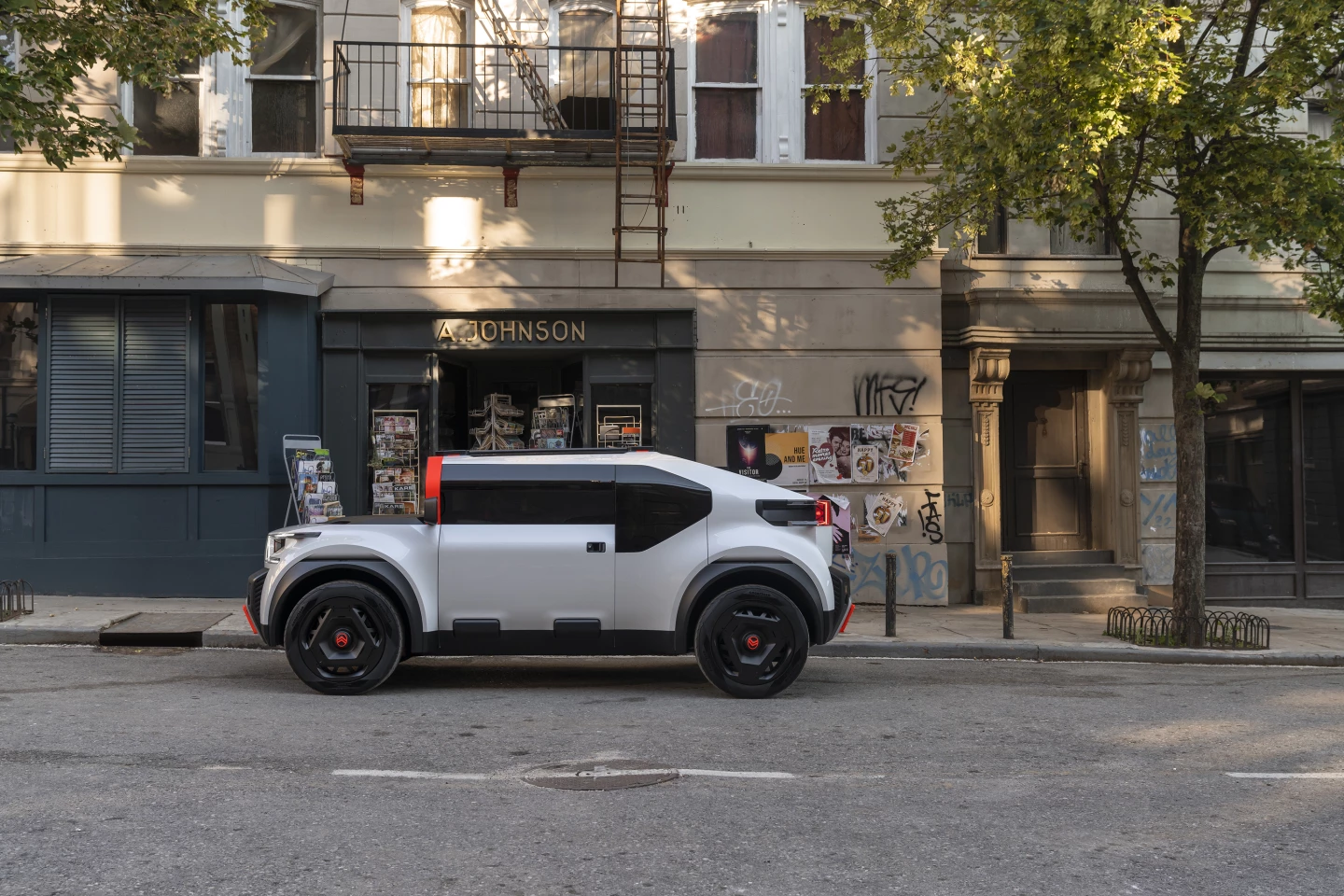
The Oli may not be wholly a utility vehicle, but it isn't not one, either. Citroën bills the car as a little bit of everything, ranging from a family sedan, to a city car, to an adventure vehicle and work truck. A small pickup bed helps it perform these multitude of uses and is accessed by dropping the tailgate and sliding the rear windshield glass up. Well shorter than the average truck bed, this one adjusts in length between 679 and 1,050 mm (2.2 to 3.4 ft).
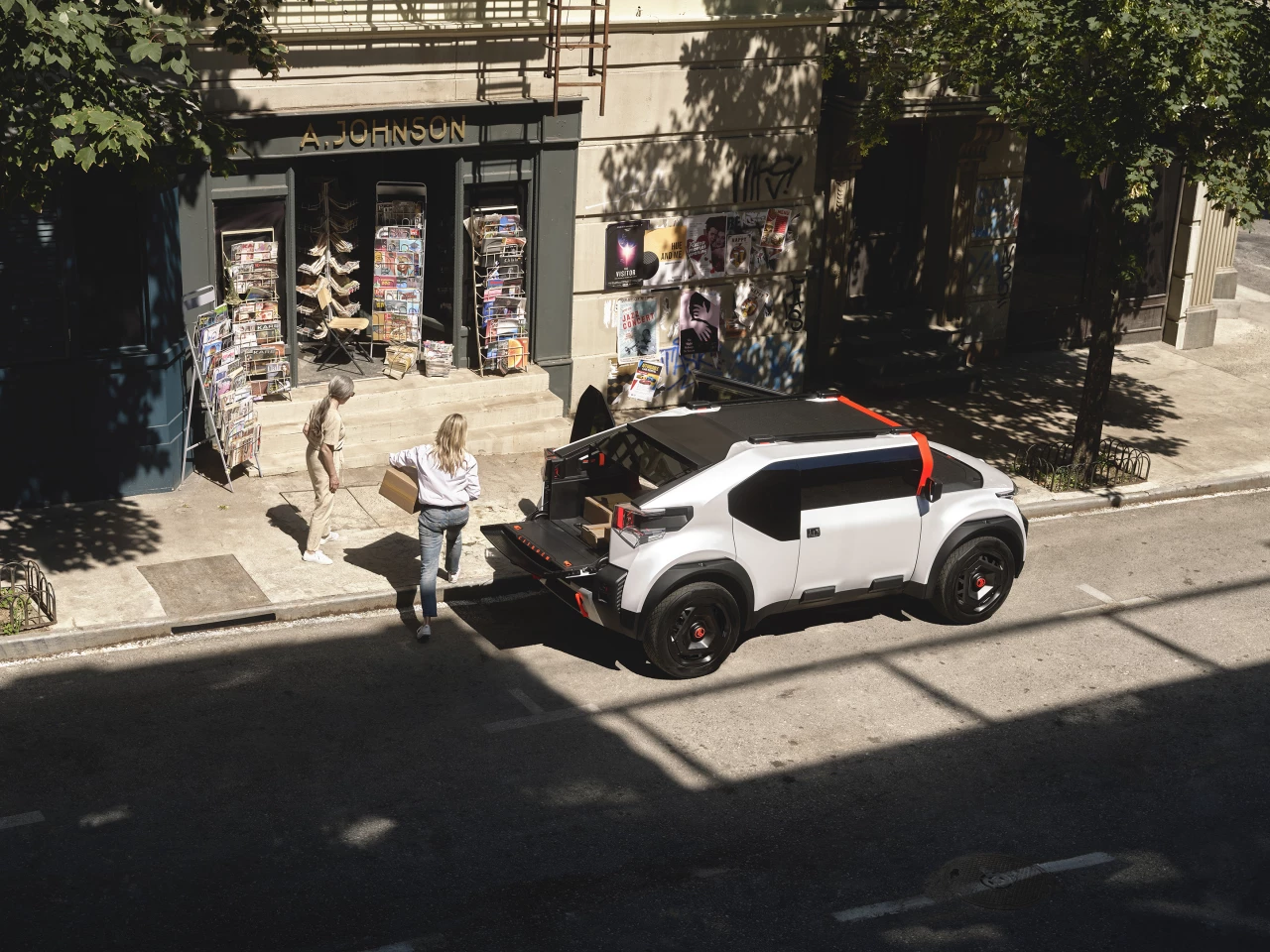
The removable bed floor, roof and hood panels are made of a honeycomb sandwich construction of recycled corrugated cardboard centered between fiberglass reinforcement sheets. "Cardboard" certainly doesn't sound like it belongs with the likes of "steel" or "fiberglass" in a conversation about automotive construction, but the panels are structurally sound enough for adults to stand on and still offer an estimated weight savings of 50 percent vs steel panels. A textured top layer adds traction for the purpose of getting up on the car.
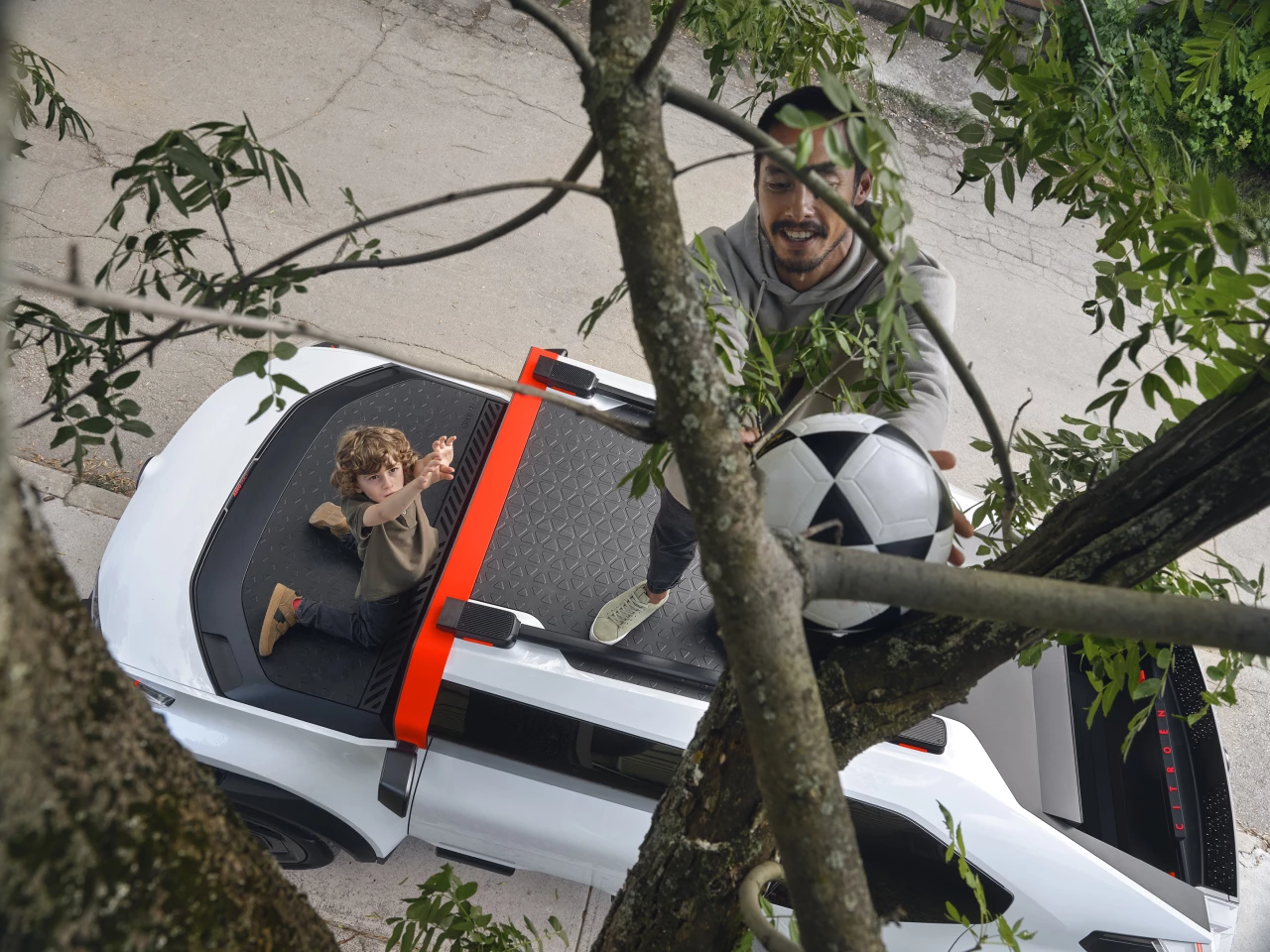
All the weight-saving measures and a limited top speed of 68 mph (109 km/h) help the Oli get the most out of its modest 40-kWh battery pack, offering an estimated 248 miles (400 km) of range. It's also designed to work as an augmentative vehicle-to-grid and portable vehicle-to-load power source.
The Oli concept rides on prototype hybrid steel-aluminum wheels, designed to find a sweet spot in weight-to-price, and Goodyear Eagle GO recycled-content, tread-monitoring concept tires.
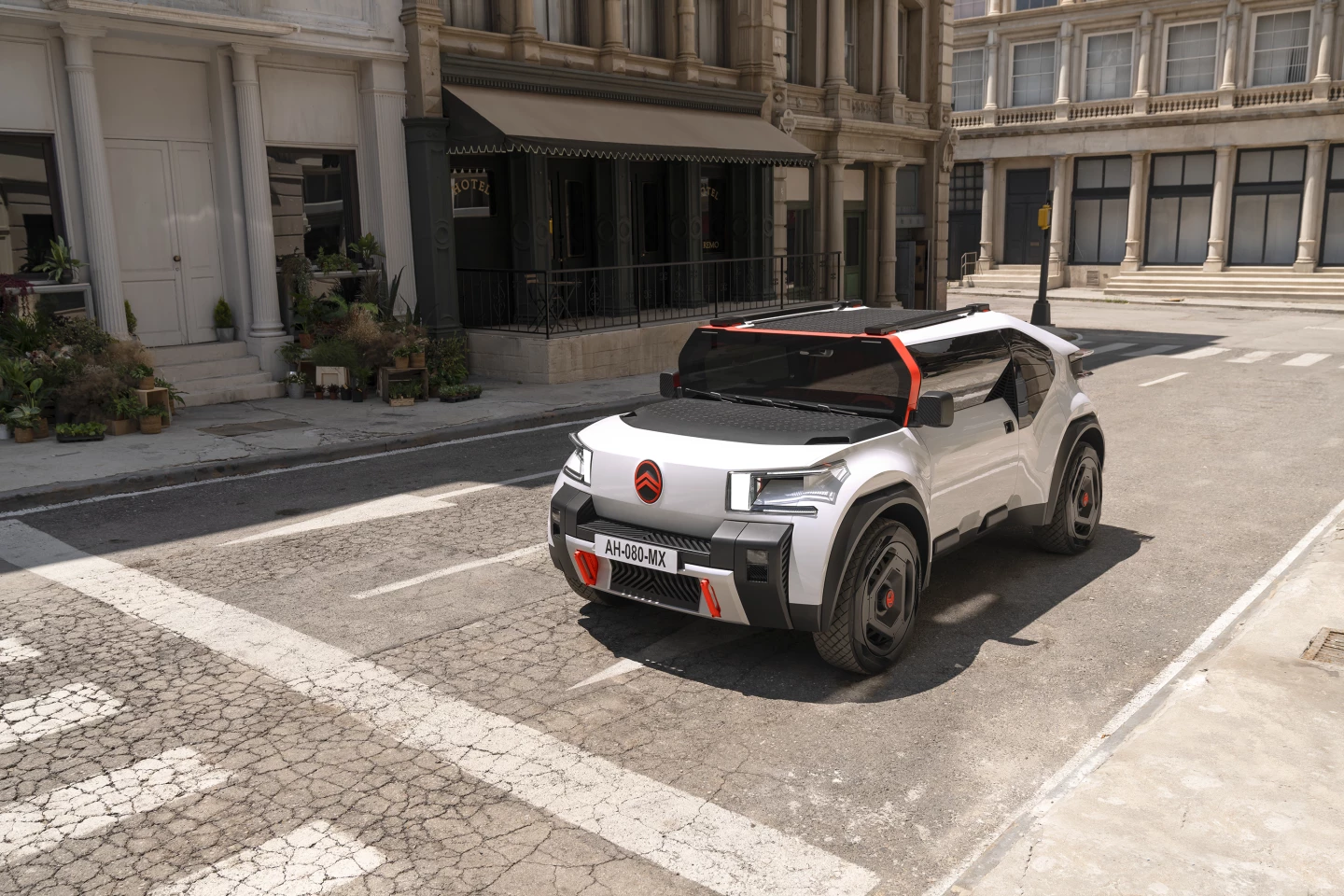
Inside, Citroën simplifies the dashboard into a single beam housing little more than five climate control toggles, two vents, USB ports and docked portable Bluetooth speakers corking the ends. The usual digital instrument and infotainment screens are done away with, and the car relies solely on the driver's docked smartphone. The lightened dash/center console design cuts total components from 75 down to 34.
Slimmed seats with 3D-printed recyclable-TPU mesh backrests, light, open door panels optimized for storage, and a modular BASF E-TPU durable floor covering further simplify and lighten the cabin.
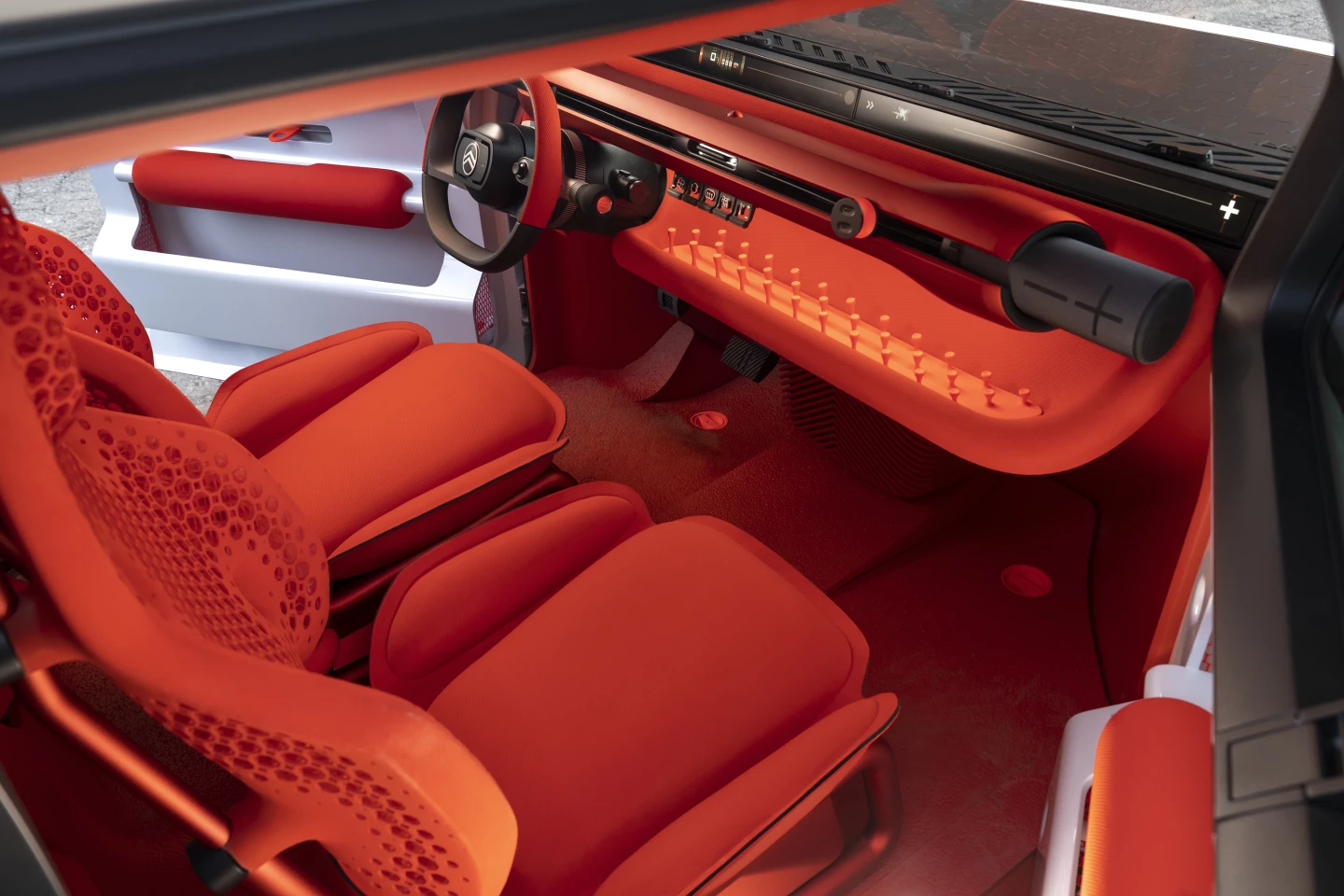
The Oli seems perfectly timed for a debut at next month's Paris Motor Show, but Citroën's announcement doesn't mention it specifically so we'll see if it's there once the show starts. We don't expect the car to follow the Ami to production as currently constructed, but Citroën frames it as a serious exploration of materials and designs that will influence future products. It reminds us in scope of Mini's 2021 Strip concept, but more extreme in styling, less extreme in removing vehicle content.
Source: Citroën

























